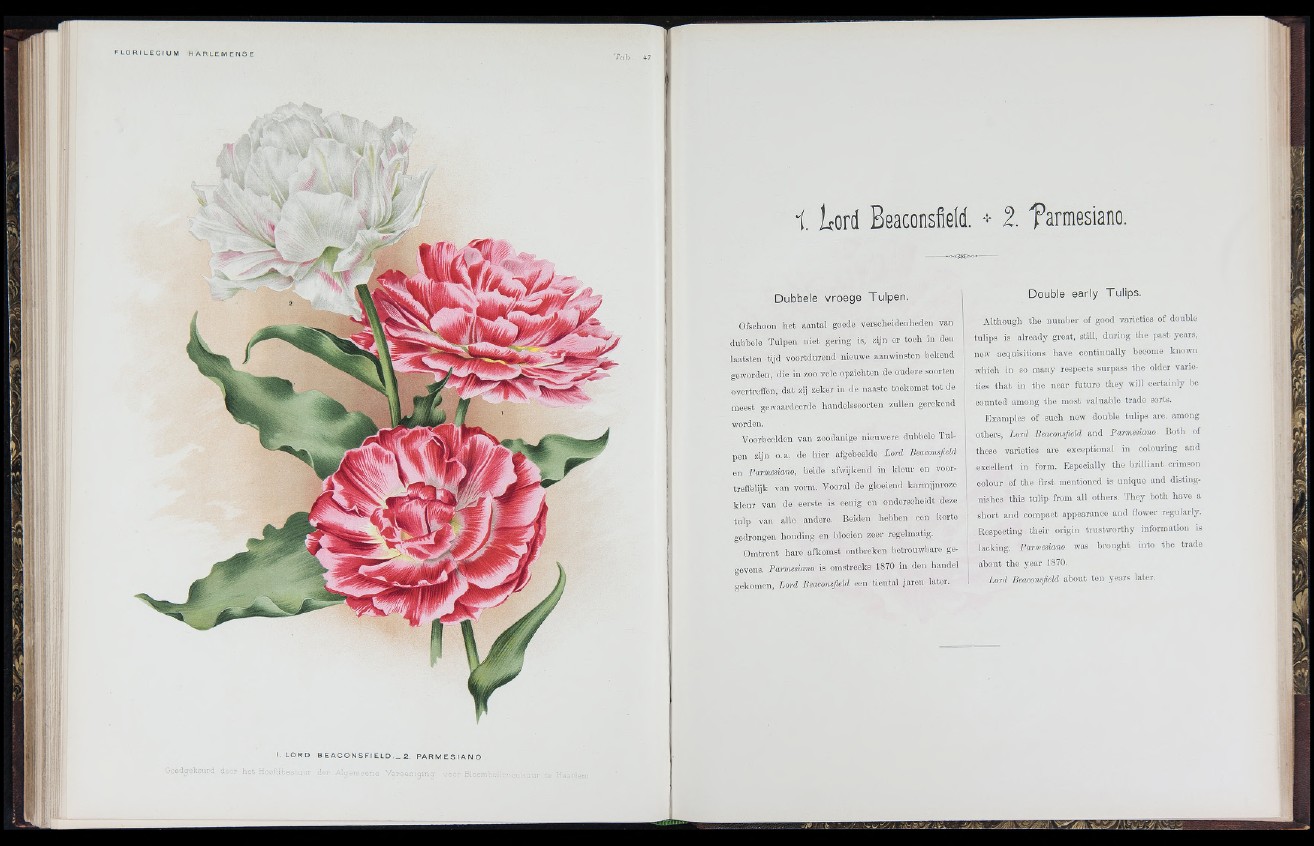
’ ’11
J î :
AN
f'-i
,liv ; I
A i
i ; !
I. L O R D B E A C O N S Fl E L D . _ 2. P A R M E S I A N O
1. fiord Beaconsfield. + 2. farmesiano.
Dubbele v ro e g e T u lp e n .
Ofschoon het aantal goecle verscheidenheden van
dubbele Tulpen niet gering is, zijn er toch in den
laatsten tijd voortdurend nieuwe aanwinsten bekend
geworden, die in zoo vele opzichten de oudere soorten
overtreffen, da t zij zeker in de naaste toekomst to t de
meest gewaardeerde handelssoorten zullen gerekend
worden.
Voorbeelden van zooclanige nieuwere dubbele Tulpen
zijn o.a. de h ier afgebeelde Lord BeaconsßM
en Parmesiano, beide afwijkond in k leu r en voor-
treffelijk van vorm. Vooral de gloeiend karmijnroze
k leu r van de eerste is eenig en onderscheidt deze
tu lp van aile andere. Beiden hebben eon korte
gedrongen honding en bloeien zeer regelmatig.
Omtrent hare afkomst outbroken boti-onwbare gegevens.
Parmesiano is omstreeks 1870 in den liandel
gekomen, Lord Beaconsfield con tiental jaren later.
Double e a rly T u lip s .
Although the number of good varieties of double
tulips is already great, still, d uring the past years,
new acquisitions have continually become known
which in so many respects surpass the older varieties
th a t in the neat future they will certainly be
counted among the most valuable trade sorts.
Examples of such new double tulips are. among
others, L.ord Beaconsfield and Parmesiano. Both of
these varieties are exceptional in colouring and
excellent in form. Especially the Ijrilliant crimson
colour of the first mentioned is unique and distinguishes
this tulip from all others. They both have a
short and compact appearance and flower regularly.
Respecting their origin trustworthy information is
lacking. Parmesiano was brought into th e trade
about the year 1870.
Lord Beaconsfield about ten years later.